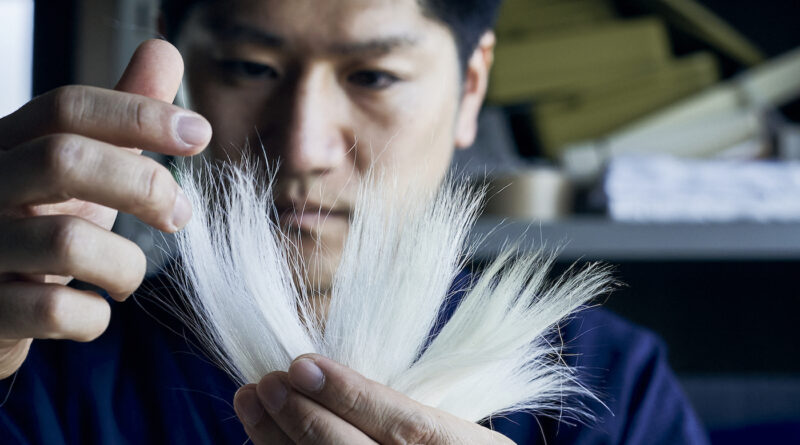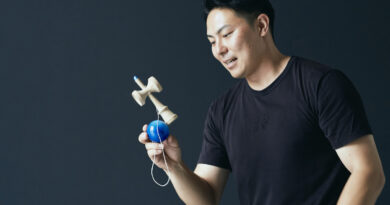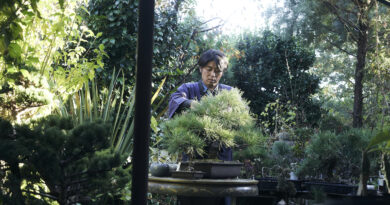From the Yangtze Valley to the Inland Sea
Japanese brush makers Bunshindo have been creating the world’s best calligraphy brushes on the coast of the Inland Sea for around 100 years.
In the 1970s, Yoshiyuki Hata left his hometown of Kawajiri on the coast of the Seto Inland Sea for China’s Yangtze Valley. On a quest to find goat hair of unparalleled quality, he spent hours meticulously checking clumps of hair taken from the chests of wild mountain goats in the light of the sun, selecting only the very best, destined to be turned into some of the world’s finest calligraphy brushes.
Driven by ambition, a legacy is secured

Yoshiyuki had taken over the family brushmaking business established by his grandfather in 1930 at the age of 18. Kawajiri, along with the nearby town of Kumano, had developed into one of Japan’s most prestigious centers of calligraphy brush production. The neri-maze method of mixing bristles by hand to create high quality brushes worthy of the world’s most demanding calligraphers involves the mastery of around 70 different steps carried out by a single craftsperson. Having spent much of his childhood, when not doing farm chores, in his father’s workshop, Yoshiyuki was already an award-winning brushmaker by the time he took over.
Extremely fine, but with body and bounce, goat hair is the gold standard when it comes to brush making. It is, however, extremely difficult to work with, beyond the capability of all but the most skilled brush makers. Determined to surpass his father and become one of this rare breed, Yoshiyuki first needed to invest in the best materials available –– hence the trip to China.
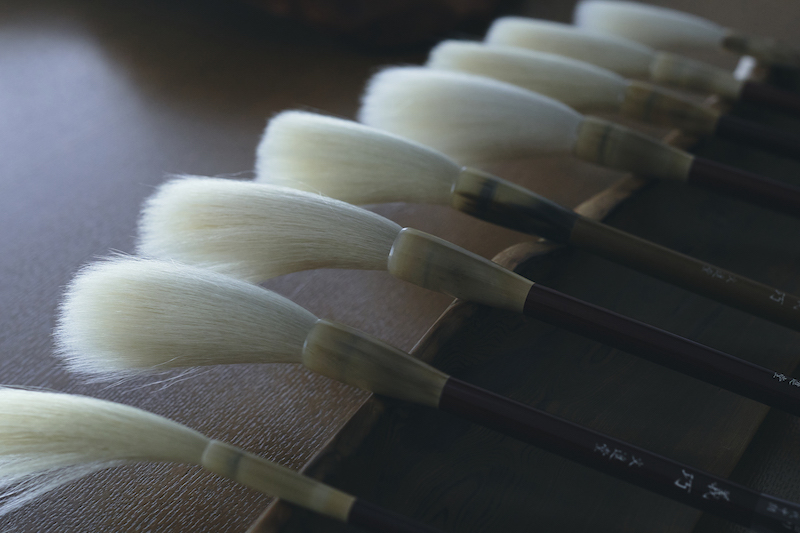
As it turns out, Yoshiyuki was very prescient. Bunshindo’s goat hair brushes are still made with that same Yangtze valley goat hair today. While the quality of available goat hair has steadily declined due to environmental degradation and changing farming methods, Bunshindo’s supply of 50-year-old goat hair continues to improve as it matures.
Uncompromising dedication to quality
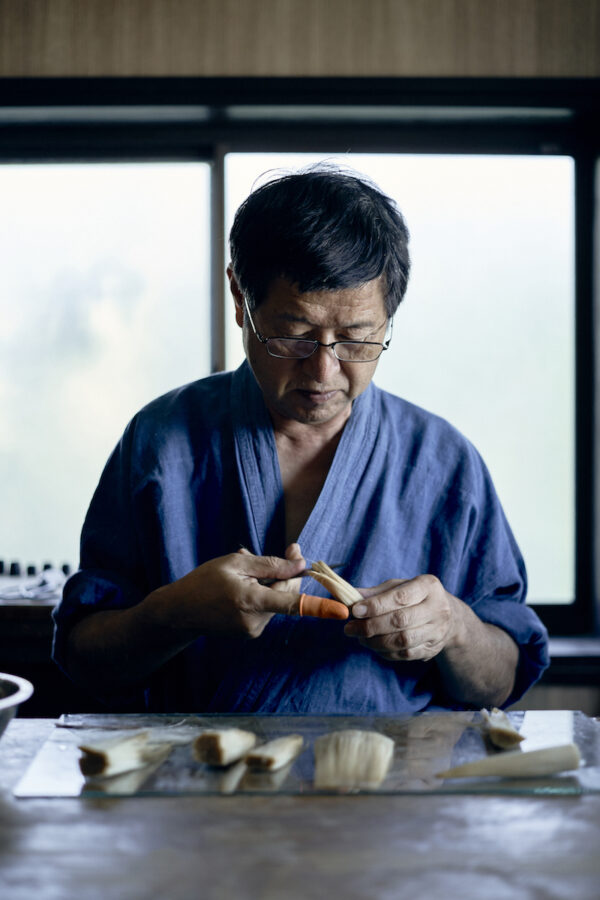
Yoshiyuki works on what will become the head of a brush in the small atelier attached to the family home overlooking the islands of the Inland Sea. He combs the hair repeatedly, pulling out uneven strands as he goes. Each time, to the untrained eye, the brush head looks perfect. But, combed again, more rogue hairs appear. Precious, half-a-century-old goat hairs litter the floor. This is the price of true quality, Yoshiyuki says stoically. He will do this over and over, for as long as it takes, discarding as much of the precious hair as is necessary, until the brush head is perfect.
This is the key to Bunshindo’s process. There is no compromise. From the materials used, to the acceptance of nothing short of perfection at each and every one of the stages in the production process.

Bunshindo’s highest quality brushes are custom made to meet the needs of calligraphers and artists looking for a certain brushstroke or effect. They are also tailored to the customer’s way of handling. Each is unique, each a work of art.
On one particular brush, Yoshiyuki worked for over 20 years. The only brief being that he should make the best possible brush imaginable, no matter how long it might take. In an ending worthy of a Kurosawa film, the customer never felt the exquisite touch of Yoshiyuki’s master work as they passed away before its completion. The monetary value of the brush was around US$30,000, but to the family of the customer that now displays it as a work of art, it is a priceless embodiment of both artist and creator.
From the 3rd to the 4th generation
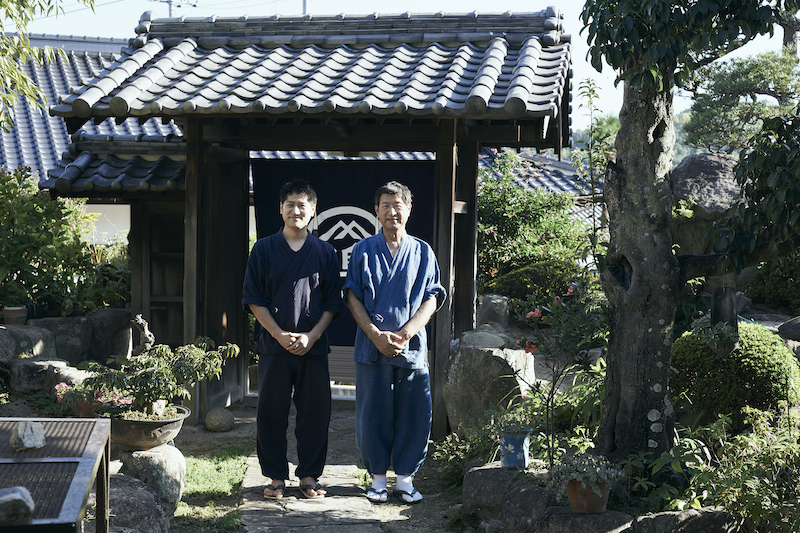
Many of Japan’s traditional crafts are in danger. Not only from reduced demand and appreciation for the products themselves, but from the lack of people willing to take over from aging shokunin, as Japan’s master craftspeople are known. Bunshindo is fortunate in this respect. Yoshikyuki, now in his 70s, knows that, in his son Koso, the family legacy will continue for at least another generation.
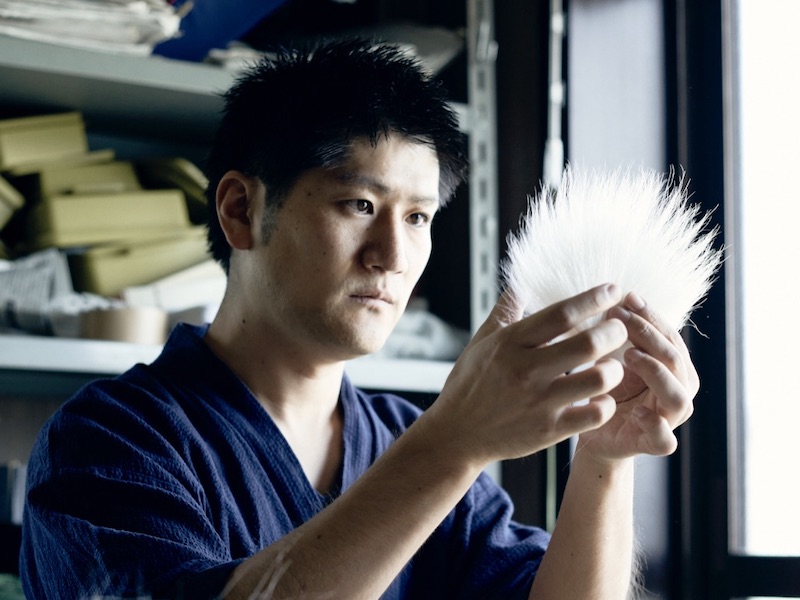
Like his father, Koso also grew up immersed in the tradition of brushmaking. From when he was an infant he would play games involving assessing the quality of different kinds of hair and spent many hours in the workshop alongside his father. He says it felt completely natural for him to take on the family profession. “I was kind of brainwashed, I guess,” he laughs.
The admiration and respect Koso has for his father is clear, as is his passion for the art of brushmaking. When explaining the qualities of different materials or elements of the production process, Koso’s face lights up and his enthusiasm is palpable.
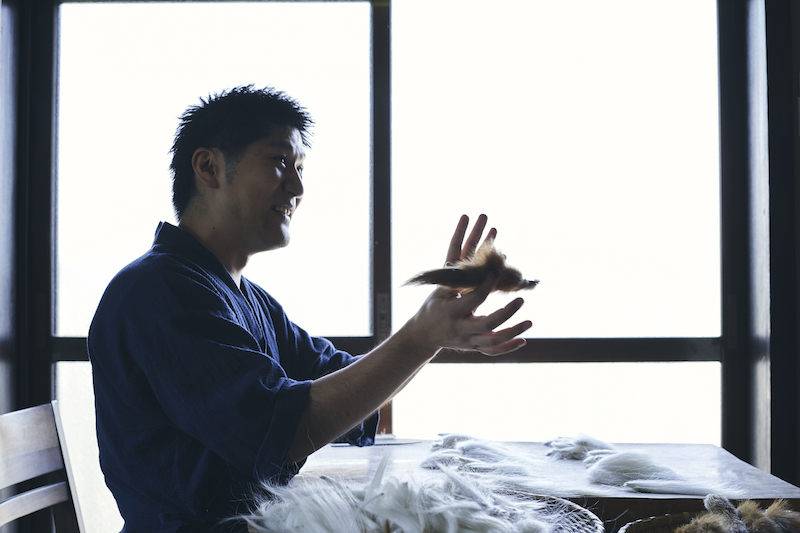
Koso jumped in at the deep end, starting with goat hair brushes. The word kan comes up over and over when talking with his father. Loosely translated as “instinct”, kan is not something that can easily be taught, but must be earned. Koso has learned his trade just as his father did, developing his sense of kan through thousands of hours of dedicated attention to materials and process. Father and son sit side by side, 9 to 5 every day, mostly in silence. When it comes to guidance, Koso says that he has only ever received two kinds of feedback from his father. Something is either “good” or “not good”.
Bunshindo, the next generation
When I ask Yoshiyuki about the future of Bunshindo and traditional brushmaking, he defers to his son and excuses himself. It is understandable, perhaps. After all, not only has he dedicated his life to reaching the highest level of skill in his craft, but secured a supply of now-unattainable materials that will enable his son to continue to pursue the uncompromising quality of brushes for which Bunshindo has become known. What more can we ask of him?
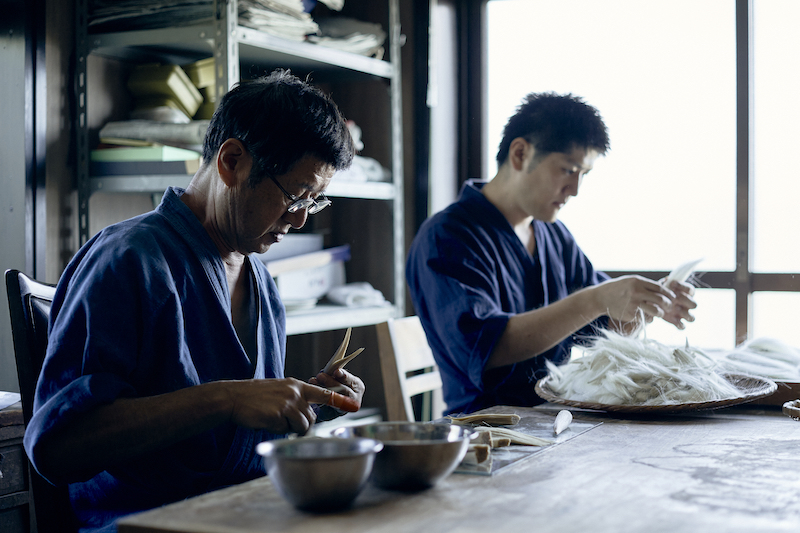
Koso stands between two worlds, that of the tradition in which his father was brought up and the world in which his young daughter is growing up. Well aware of the challenges that he and his craft face, he feels that as well as working to preserve traditional calligraphy and an appreciation of their craft within Japan, Bunshindo needs to broaden their outlook in terms of both product and market.
In this, he is ably aided by his older sister Yuri, who has taken a marketing and promotion role in the business. In an age of mechanization and digitalization, the uncompromising, handcrafted quality characteristic of Japanese craftsmanship which Bunshindo exemplifies has a powerful appeal around the world. Four years ago, a French artist who joined a Bunshindo workshop held in Paris was instantly enamored by their brushes, enthusing that it was the first time he held a brush that felt like it has a life and soul of its own. They have also turned their skills to creating high quality brushes aimed at professional makeup artists.

In another form of outreach, Bunshindo are opening up their workshop to visitors from overseas who are interested in learning about the traditional brush making process as a way of showing people first hand how much skill and passion goes into creating these beautiful brushes. Koso also finds inspiration from overseas, constantly intrigued and delighted by artworks, beyond calligraphy, that their brushes are used to create.
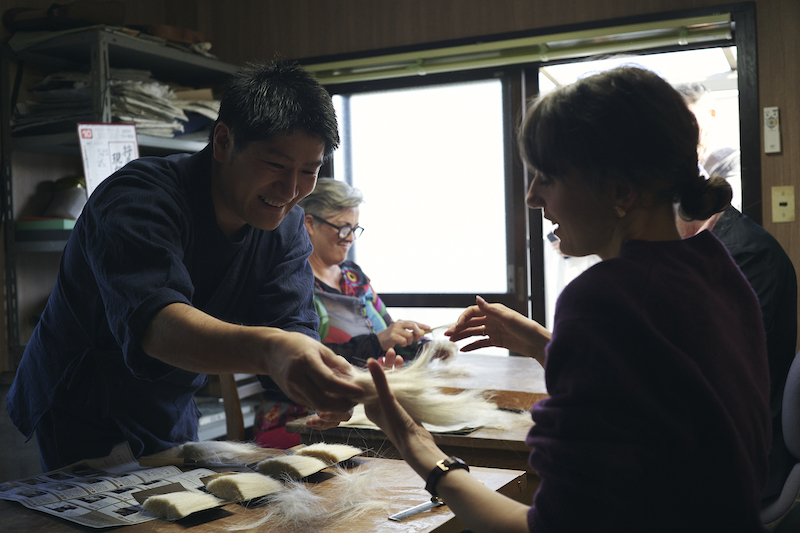
As to where the 5th generation will come from, I ask Koso if he can imagine his daughter picking up the baton. Well, he says, in this day and age, we have to give our kids the freedom to choose the path they want to take for themselves. Then, after a pause, he continues, I would like her to appreciate what we do here though. Maybe a little brainwashing would be OK, he says with a smile.
Bunshindo [文進堂 畑製筆所]
December, 2023
Photos: Shota Matono


